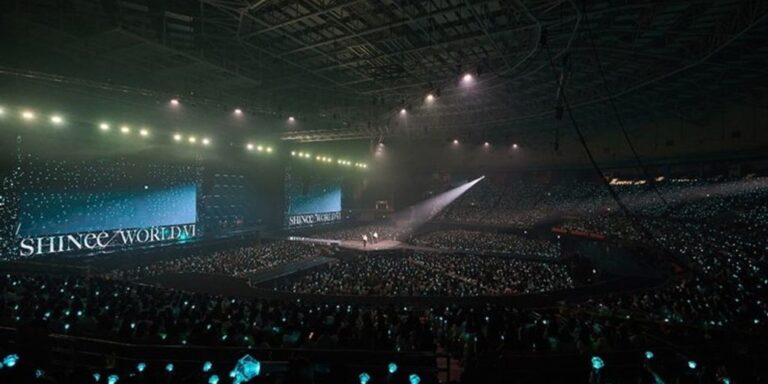
K-Entertainment, a term that encompasses the vibrant worlds of K-Drama and K-Pop, has evolved from a local phenomenon in South Korea to a global sensation. This article delves into the multifaceted journey of K-Entertainment, exploring its origins, the behind-the-scenes efforts, the influential figures, the challenges faced by its stars, the power of its fandoms, its role in cultural exchange, and its economic dynamics.
Key Takeaways
- K-Entertainment has successfully transitioned from a local cultural phenomenon to a global sensation, influencing international pop culture significantly.
- The production of K-Drama and K-Pop involves intricate processes and faces numerous challenges, with agencies and management companies playing crucial roles.
- Icons of K-Entertainment, including both pioneers and modern-day superstars, have significantly shaped the industry’s landscape.
- The dark side of stardom in K-Entertainment includes struggles with mental health, controversies, and the impact on personal lives, highlighting the pressures faced by its stars.
- Fan culture in K-Entertainment wields substantial power and influence, contributing to social impact and economic dynamics.
The Rise of K-Entertainment: From Local Phenomenon to Global Sensation

Early Beginnings and Cultural Roots
K-Entertainment, also known as the Korean Wave, started as a local phenomenon in South Korea. It began with traditional music, dance, and drama that were deeply rooted in Korean culture. Over time, these cultural elements evolved and started gaining popularity outside Korea.
Key Moments in Global Expansion
The global expansion of K-Entertainment can be traced back to several key moments. One significant milestone was the international success of Hyun Bin, who was named Gallup Korea’s Television Actor of the Year in 2011. His works helped establish him as a top Hallyu star. Another pivotal moment was the release of the movie "The Joy Luck Club" in 1993, which paved the way for more Asian-centric stories in the entertainment industry.
Impact on International Pop Culture
K-Entertainment has had a profound impact on international pop culture. It has influenced various aspects of global entertainment, from music and movies to fashion and beauty trends. The Korean Wave has also led to collaborations with Western artists, further bridging the gap between East and West.
The rise of K-Entertainment is a testament to the power of cultural exchange and the universal appeal of compelling stories and performances.
Behind the Scenes: The Making of K-Drama and K-Pop

Production Secrets and Challenges
Creating K-Dramas and K-Pop songs is a complex process. Producers face many challenges like tight schedules and high expectations. They work hard to make sure everything is perfect, from the script to the final performance. Sometimes, they even have to change things at the last minute to meet audience demands.
Role of Agencies and Management Companies
Agencies and management companies play a big role in the success of K-Entertainment. They handle everything from training the artists to promoting their work. These companies often have strict rules and schedules for their artists to follow. This helps in maintaining a high standard of quality.
Innovations in Music and Filmmaking
K-Entertainment is known for its innovative approaches. New technologies like augmented reality and high-definition filming have changed the way K-Dramas and K-Pop are made. These innovations make the content more engaging and exciting for the audience.
While streaming has democratized access to K-Dramas worldwide, it’s also brought about significant changes to their content, structure, and even production.
Icons of K-Entertainment: Profiles of Influential Figures

Pioneers Who Shaped the Industry
The pioneers of K-Entertainment laid the foundation for what would become a global phenomenon. These early trailblazers were instrumental in bringing Korean culture to the world stage. Their contributions cannot be overstated.
Modern-Day Superstars
Today’s K-Entertainment superstars are household names not just in Korea, but around the world. They have achieved incredible success and have a massive influence on pop culture. Their impact is felt in music, film, and even fashion.
Unsung Heroes Behind the Success
While the stars often get the spotlight, there are many unsung heroes who work tirelessly behind the scenes. These individuals include producers, writers, and choreographers who play a crucial role in the success of K-Entertainment.
The success of K-Entertainment is a collective effort, with many people working together to create something truly special.
The Dark Side of Stardom: Struggles and Scandals

Mental Health and Pressure
Being a star isn’t always glamorous. Many celebrities face intense pressure to stay on top. This can lead to mental health issues like anxiety and depression. They often have to deal with online trolls and paparazzi, making their lives even harder.
Controversies and Legal Battles
Stars sometimes get into serious trouble. They might be accused of crimes or get involved in scandals. These controversies can ruin their careers and personal lives. For example, a business partner’s financial crimes can drag a superstar into disgrace.
Impact on Personal Lives
Fame can affect personal relationships. Celebrities often struggle to keep their private lives private. The studios and agencies sometimes want to control everything about them, from their face to their name. This can make it hard for them to have normal relationships and a happy life.
The price of fame can be very high. Some stars are willing to do whatever it takes to stay famous, even if it means becoming someone they don’t recognize.
Fan Culture: The Power and Influence of Fandoms

Evolution of Fan Communities
Fan communities have grown from small, local groups to massive, interconnected networks. These communities often start online and can quickly spread across the globe. Fans share their love for K-Entertainment through social media, fan clubs, and even fan conventions.
Fan Activism and Social Impact
Fans are not just passive consumers; they actively participate in various causes. They organize charity events, support social movements, and even influence public opinion. This activism shows the power of fandoms in making a difference.
Economic Power of Fandoms
Fandoms contribute significantly to the economy. They buy albums, merchandise, and concert tickets, generating substantial revenue. Here’s a simple table to show the economic impact:
| Item | Revenue (in millions) |
|---|---|
| Albums | 500 |
| Merchandise | 300 |
| Concert Tickets | 700 |
The interconnected world of Korean entertainment highlights the significant role of fandoms in shaping the industry.
Cultural Exchange: K-Entertainment’s Role in Bridging East and West

In recent years, the global music scene has witnessed an unprecedented wave of collaborations that bridge cultures, languages, and genres. These partnerships have not only enriched the music industry but also fostered mutual understanding and appreciation between different cultures. K-Pop’s international collaborations have played a significant role in this cultural exchange, bringing together artists from diverse backgrounds to create unique and harmonious works.
The portrayal of cultures in media can greatly influence public perception. While K-Entertainment has made strides in representing Korean culture on the global stage, there have been instances of misrepresentation and cultural appropriation. It’s important to recognize and address these issues to ensure that cultural exchange is respectful and accurate. Efforts are being made to improve cultural representation, with more voices from diverse backgrounds contributing to the narrative.
The future of cross-cultural projects in K-Entertainment looks promising. With advancements in technology and increasing global connectivity, there are more opportunities than ever for artists to collaborate and share their work with a worldwide audience. This not only benefits the artists but also enriches the cultural landscape, offering audiences a chance to experience a blend of different traditions and perspectives.
The ongoing cultural exchange between East and West through K-Entertainment is a testament to the power of art in bridging gaps and fostering understanding among people from different backgrounds.
The Business of K-Entertainment: Economics and Market Dynamics

K-Entertainment makes money in many ways. Concerts and merchandise are big earners. Streaming services also bring in a lot of money. Companies need to show sustained growth potential to keep investors happy.
Technology helps K-Entertainment reach fans worldwide. Social media platforms like YouTube and Instagram are key. They help artists connect with fans and promote their work. This global interest boosts the industry’s growth.
K-Entertainment faces challenges like competition and market saturation. But there are also many opportunities. New talent and higher streaming revenues can help the industry grow. Companies must adapt to changing trends to stay successful.
The K-Entertainment industry needs to demonstrate sustained growth potential through a combination of new talent, higher streaming revenues, and innovative strategies.
Conclusion
The journey through the world of K-Entertainment is a vivid tapestry of triumphs, trials, and tenacity. From the meteoric rise of stars to the behind-the-scenes struggles that shape their careers, the stories of success, strife, and stardom are as compelling as the performances that captivate audiences worldwide. As we reflect on these chronicles, it becomes clear that the allure of K-Entertainment lies not just in its glitz and glamour, but in the resilience and passion of those who bring it to life. Their narratives remind us that behind every dazzling performance is a story of perseverance, making the world of K-Entertainment a fascinating realm of human endeavor and artistic expression.
Frequently Asked Questions
What is K-Entertainment?
K-Entertainment refers to the entertainment industry in South Korea, encompassing K-Pop music, K-Drama television series, films, and other forms of media and entertainment.
How did K-Entertainment become a global sensation?
K-Entertainment’s global rise can be attributed to its unique blend of catchy music, high-quality production, engaging storytelling, and the strategic use of social media and online platforms to reach international audiences.
Who are some influential figures in K-Entertainment?
Influential figures in K-Entertainment include pioneers like Seo Taiji and Boys, modern-day superstars like BTS and BLACKPINK, and unsung heroes such as producers, directors, and choreographers who work behind the scenes.
What are some common challenges faced by K-Pop idols and K-Drama actors?
Common challenges include intense training schedules, high pressure to maintain public image, mental health issues, and the demands of balancing personal and professional lives.
How do fan communities impact K-Entertainment?
Fan communities play a crucial role by promoting their favorite artists, organizing events, engaging in fan activism, and contributing significantly to the economic success of the industry through merchandise sales and concert tickets.
What is the future of cross-cultural collaborations in K-Entertainment?
The future of cross-cultural collaborations looks promising, with increasing partnerships between Korean and Western artists, greater cultural exchange, and more diverse and inclusive representation in global media projects.




Leave a Comment